Chandima Bandara Ambanwala
Department of Archaeology & Heritage Management, Rajarata University of  Sri Lanka, Mihintale.
Translated by. Chryshane Mendis
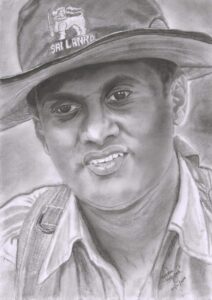
When looking at the history of prehistoric research in Sri Lanka, the last stage could be considered as the modern period which began from 1969. When going through the prehistoric explorations conducted during this period and their findings, it could be stated as the golden age of prehistoric research in Sri Lanka. The archaeological excavations and analysis methods was revolutionized by Dr. Siran Deraniyagala in 1969 with the excavations of the near Image house (Gedige) of the Citadel area of Anuradhapura, which could be seen as the inaugural step into this modern period. The contributions made by the scholars who came through the free education system in the country could be seen during this period, and the most important resource person being Dr. Siran Upendra Deraniyagala. At the beginning of the modern period, all research on the prehistory of the country was done through the Department of Archaeology under the leadership of Dr. Siran Deraniyagala. Also during this period could be observed the contributions of foreign scholars invited by the Department or in collaboration with them. From the 1990s prehistoric research was being centered on the Postgraduate Institute of Archaeology (PGIAR) of the University of Kaleniya.
In studying the contributions of the scholars of prehistory during this period, the works of Dr. Siran Deraniyagala takes much importance and from here on would follow the activities carried out into the prehistory of Sri Lanka by Dr. Deraniyagala.
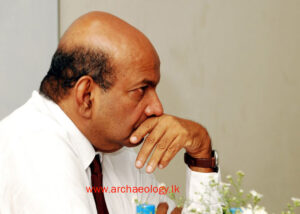
The son of Dr. P. E. P. Deraniyagala (discussed in the previous article) and Prini Molamure, he was born on the 1st of March 1942 and received his primary and secondary education at St. Thomas College Mount Lavinia. He received his Bachelors of Arts in the subjects of Architecture, Sanskrit and Latin from the University of London in 1963 and his Masters in 1966 from the same University. He completed his Postgraduate Diploma in Archaeology from the University of London and also received the ‘V. Gorden Childe’ award for the best archaeology student of the year. Between the years 1964 to 1976 he was trained in practical and theoretical aspects of prehistory under leading archaeologists of England, France and India. In 1968 he arrived in the island and joined the Department of Archaeology as an Assistant Director of excavations and explorations. For more information see the eJournal Dinithi-Sri Lanka Archaeology authored by the author and a team including Dr. Deraniyagala.
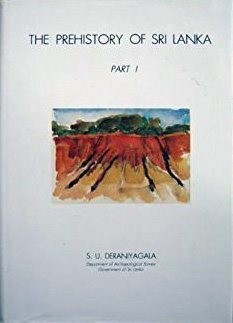
Siran Deraniyagala, began his entry into the prehistoric study by reexamining the snail shells and bones of previous excavations. From the 1969 Citadel excavations at Anuradhapura to conducting various prehistoric, proto historic and early historic excavations and gaining further theoretical knowledge, through his father’s guidance; he received his PhD from the Harvard University in USA and produced one of the most excellent prehistoric thesis from all Asia titled ‘Prehistory of Sri Lanka: An Ecological Perspective’ (this has been published in two parts in the Archaeological Department’s memorial thesis series and has been the handbook for Prehistoric research in Sri Lanka).
From 1969 Dr. Siran Deraniyagala focused on a more organizational study using modern techniques and methods. Accordingly the first step taken at the Citadel excavations at Anuradhapura was the gathering of all known scientific data under the topics a. logical elements, b. chronology, c. technology, d. subsistence, e. settlements, f. arts, g. practices and duties, h. social organization, i. physical anthropology and j. palaeo environment to which he investigated and analyzed them under a new foundation thus creating a new path in research methodology.
The Iranamadu formation and  cave deposits first identified and studied by the early scholars such as E. J. Weyland and P. E. P. Deraniyagala were used for the initial surveys and excavations. These excavations were focused on the soil layer found on the island. This initiative could be stated as a foremost initiative in world archaeological excavations. In these excavations taking example from matrix chart method, various excavations were carried out in which the digs were conducted in such a way that every single artifact could be retrieved. According to this method, there were 3 excavations conducted in the study of prehistory:
A. Bundala-Wellegangoda 8m deep static gravel terrace of red latosol of decayed prehistoric sand dunes
B. Pathirajawela 15m deep gravel terrace covered by red latosol of sand dunes.
C. Bundala-Lewagangoda 25m deep gravel ground covered by red latosol.
The Archaeological Stratification method in excavations was first introduced by Dr. Siran Deraniyagala in the inner city excavations of Anuradhapura in 1969 and also at the Mesolithic settlement of Bellanbandi pallessa in 1970.
Examining prehistoric facts in respect to environmental and geological factors of the island was conducted during this period with much focus on the geological changes during the Quaternary period. Siran Deraniyagala is responsible for steering the study of the prehistory of Sri Lanka in a new path with a broad inter-disciplinary perspective. Focusing on the developments in the United States and Europe, Dr. Siran Deraniyagala strived to acquire those technology and knowledge for archaeological excavations in Sri Lanka and collaborated with many foreign scholars such as the famous physical anthropologist Keneth A. R. Kenndey. Dr. Siran Deraniyagala also initiated research collaborations with other Asian countries such as India, Java and Sumatra and also Australia. Accordingly studies were conducted comparing the red soil found from the Terri Sites in South India and the red soil from the Iranamadu formation in Sri Lanka which revealed valuable information. Further important research was conducted on the Mesolithic man of Sri Lanka in comparison with foreign primitive human tribes such as the Kadar, Malapandam, and the Venchu. During this period it could be observed that studies were conducted in the coastal areas, the central hill and Horton Plains and also parts of the wet zone.
For these programmes Dr. Deraniyagala created a surveying and excavation team grooming the officers under him into resource persons in the fields of lithic analysis, soil stratification, and chronological dating. This grooming of a future research team could not be seen from the previous periods of prehistoric exploration. Some of the excellent scholars of this grooming are W. H. Wijepala, Nimal Perera and Alfred De Mel.
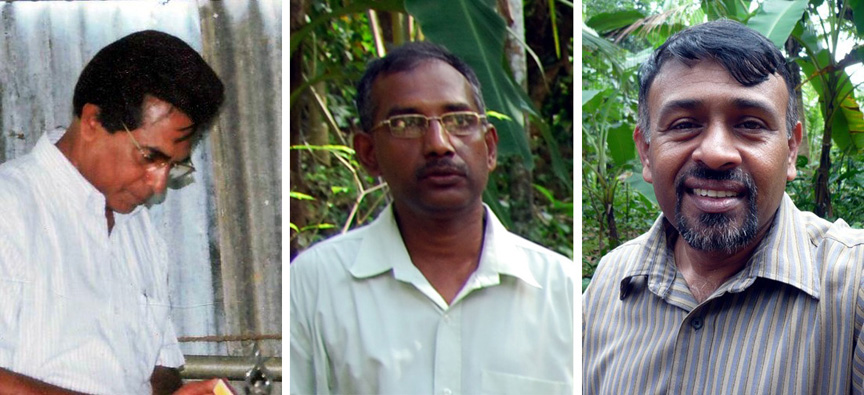
Much of the problems of the Paleolithic period were answered under the studies conducted by Dr. Siran Deraniyagala and through the archaeological excavations of the Iranamadu formation (IFm), and Minihagalkanda in the Yala National Park, he showed that there was a definitive Paleolithic period in the island and this was dated to be 125,000/250,000 years ago. He was also able to gather information of the environment and human cultures during the Pleistocene epoch as identified by P. E. P. Deraniyagala.
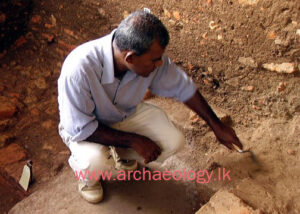
Out of all these the most important being the painting of the complete picture of Sri Lanka’s Mesolithic period which was until then a vague drawing, based on excavations conducted in the wet zone (eco zone D) such as the Beli Lena in Kithulgala, Batadomba Lena of Kuruwita, Bulathsinghala Fa-hian Lena, Aththanagoda Alulena, Horton Plains, Bellanbandipellassa in Embilipitiya, and Ravana cave. Details on the physical anthropology of the Mesolithic man, his food habits, lifestyle, technology, his rituals, the environmental conditions in which he lived and various other aspects was revealed through these excavations.
Dr. Siran Deraniyagala has been able to logically portray the island’s history from the prehistoric age through the proto historic to the historic age. The archaeological researches led by Dr. Siran Deraniyagala have been able to find some of the oldest evidences of modern man in all of Asia thus bringing Sri Lanka to the spot light in prehistoric research. Further these researches were able to prove with evidence the world’s first use of geometric microlithic technology (more than 32,000 years ago) from Sri Lanka. Similar evidence of these is only found in a handful of sites in the African continent and from one site in East Asia. Taking to account all these findings Dr. Siran Deraniyagala has been able to compose a chronological order of the prehistory of the island.
As a scholar of the island’s prehistory for a long period, he has made many classifications regarding this period with one of the most important classifications being that of the stone tools done by studying over 2 lakhs of stone implements found throughout the island. The magnitude of this classification can be seen when comparing the previous classifications of stone tools in the country. For this classification a stone tool is checked for 1. Provenance, a self explanatory contextual attribute, 2. trimming, 3. Plan-Form (blank contour), 4. Apparent Function, 5. Used Marks, 6. Raw material, 7. Cross-section and 8 Size. Through this classification the stone tools of Sri Lanka can be divided into 19 classes and these classes can be further divided into 115 types (await a complete description on stone tools in this series).
The most significant scholar of the modern period of prehistoric research in the island, Dr. Siran Deraniyagala has worked over 40 years on the study and investigations of prehistory and continue to assist in the study of prehistory as a consultant and resource person. Apart from prehistory he continues to conduct researches on the proto historic and early historic periods. As stated by the American Anthropologist Journal as the handbook of Sri Lankan prehistory his Prehistory of Sri Lanka: An Ecological Perspective and as long as the study of Sri Lanka’s prehistory survives, the revision of the works of Siran Upendra Deraniyagala is an inevitable fact.
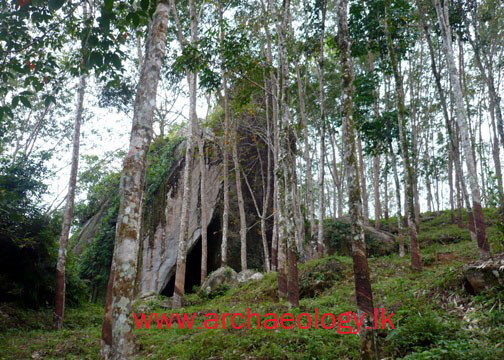
W. H. Wijeyapala who was a former Assistant Director Excavations and the former Director General of the Archaeological Department under the guidance of Dr. Siran Deraniyagala excavated the Bulathsinghala Fa-hian lena, Aththanagoda Alulena, Kithulgala Beli lena, and Warakapola Dorawakakanda. In 1980 he put forward a classification of bone tools in the island which was based on the stone tools classification of Dr. Deraniyagala. Through the excavation of the Dorawaka kanda site in Warakapola, evidence was found on the little known Neolithic period of Sri Lankan prehistory. Information on the research done by Dr. Wijepala can be found in his unpublished theses which are Mesolithic Stone Technology of Sri Lanka, a study of the Stone Implements from Beli-lena (Kithulgala), a Dissertation submitted for the MA (Archaeology) Held by the University of Peradeniya and New Light on the Prehistory of Sri Lanka; In The Context Of Recent Investigations At Cave Sites, a thesis submitted for the degree of Doctor of Philosophy of the University of Peradeniya (1997). These can be found in the main library of the Peradeniya University.
Dr. H. Nimal Perera, the former Deputy Director General of the Archaeology Department too under the tutelage of Dr. Siran Deraniyagala conducted many excavations with the most important ones being the Kuruwita Batadomba lena, Embilipitiya Bellanbandipalessa, and the Mini Ethiliya site close to Hungama, conducted in 2005. His research could be found in the book Prehistoric Sri Lanka: Late Pleistocene rockshelters and an open-air site published by the British Archaeological Report.
Prof. Gamini Adikari of the Postgraduate Institute of Archaeology (PGIAR) of the Univeristy of Kaleniya too has made an important contribution to the exploration of the island’s prehistory in the recent past. Some of the notable excavations conducted under him are the excavations of the dry zone in sites such as Pothaana, Aligala, and Pidurangala which are close to Sigiriya and also sites of the wet zone such as Pilikkuththuwa, Warana, and Aththanagalla Alawwa Pothgul lena of the Gampaha District. The information and data collected from his excavations of the sites around Sigiriya could be found in his Postgraduate thesis which is in the library of the Postgraduate Institute of Archaeology (PGIAR). Prof. Adikari has also explored the features at the end of the Mesolithic period known as the Post-mesolithic period.
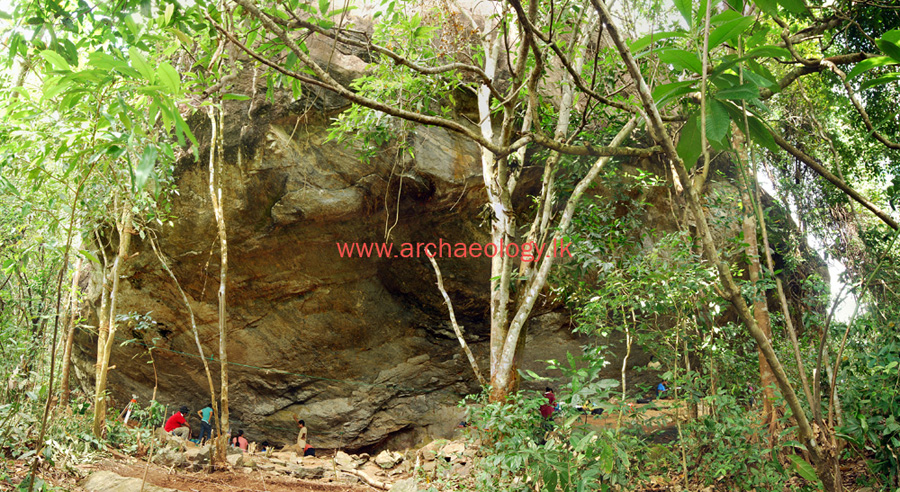
Dr. T. Rathnasiri Prematilake a Paleo-botanist of the Postgraduate Institute of Archaeology also has conducted several important explorations into the prehistory of the island. Conducting research into the Quaternary period environment; through research conducted in the Horton Plains he was able to show that cereal was cultivated there over 13,000 years through pollen evidence. Thus giving evidence on Neolithic activity in the island through the examination of paleobotanical evidence.
In the modern period of prehistoric research it could be seen that various new fields are opening up for research, once such field which is at a very developed level is that of Archaeozoology. The foundation for this field was laid by Dr. P. E. P. Deraniyagala who was originally a zoologist and was carried forward by the scientist P. B. Karunarathne. At present this unique field is headed by his student, zoologist Kalum Nalinda Manamendara-arachchi. Jude Perera of the Department of Archaeology who is a student of Kalum Manamendara-arachchi is also another scholar in this field. Under the guidance of Prof. Gamini Adikari and the supervision of Kalum Nalinda Manamendara-archchi, the Postgraduate Institute of Archaeology has been able to establish an archaeozoology division within the institute. This field investigates the remains of different species of animals consumed by prehistoric men and those found in his environment for a scientific study and identification.
Geoarchaeology, another discipline that supplements prehistory could be seen developing through the support of foreign Geoarchaeologists and Sri Lankan professional and amature Geoarchaeologists.
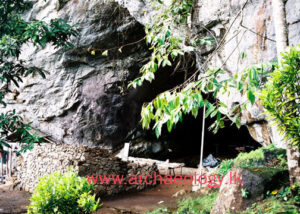
Also different organizations such as the Central Cultural Fund and other foreign institutions have led prehistoric surveys and excavations in the island revealing further the life of the prehistoric man.
As mentioned above, the modern period of prehistoric archaeological explorations began in 1969 and continues to this day. Although this discipline has developed to a great extent, much obstacles could be identified which creates a hindrance to the growth of this field (for further information, read the analytical research paper by the author on Sri Lanka Prehistoric Archaeology; the past, present and future).
According to the last 3 article of this series it could be seen that the large knowledge base created at present created at is the result of many peoples mental and physical commitment and their utmost dedication








Excellent archaeological journalism – and for the first time in Sri Lanka! Also, nice website page.